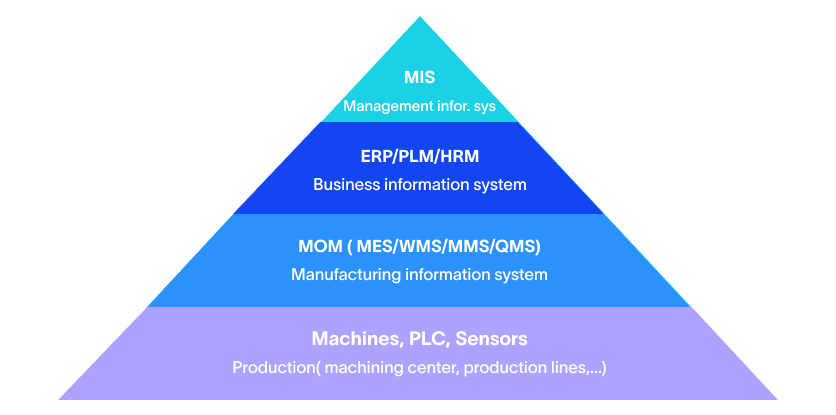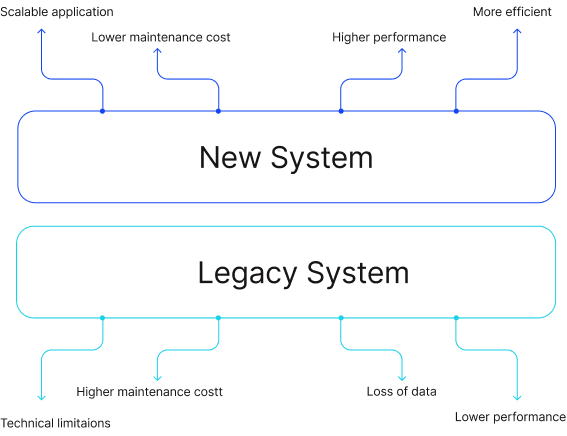SCADA vs. IIoT: Which is Right for Your Manufacturing Operations?
Blog
3 Min 45 Sec Read
The manufacturing industry has been evolving quite quickly, especially since the last decade. So, having a simple strategy isn’t going to be enough for you to be successful in the market.
If you want to dominate the spectrum, it’s important to implement two systems in your technical ecosystem right away – SCADA and IIoT. Both of these offer powerful solutions for monitoring and controlling your operations. However, the approaches they take for doing the same are quite different. So, which one’s going to be the winner for you in the battle of SCADA vs IIoT?
Let’s find out more about it.
Traditional SCADA vs. IIoT: A Side-by-Side Comparison
When choosing between SCADA vs IIoT, there are three things you need to consider and compare thoroughly. Here’s what our list includes –
The Basic Information
SCADA, or Supervisory Control and Data Acquisition, systems are usuallt developed for real-time monitoring and control. You can implement them in factories, power plants, and other industrial sites to run them smoothly by collecting and analyzing data from machines.
IIoT, on the other hand, is all about bringing smart manufacturing technologies into play. It connects industrial machines to the web, which, in turn, allows you to gather more data and evaluate the same in real time. This improves your efficiency and decision-making even more.
Key Features
SCADA offers centralized control. So, everything, including collecting and analyzing data, runs through a main system. This makes the entire process less difficult to manage or understand. It also uses various custom-built communication methods, which are unique to the vendor you are taking it from. However, while SCADA can be scaled and expanded, the process might be too complicated, if you are not being assisted by an expert.
Conversely, IIoT comes with a decentralized architecture. So, the devices integrated into this system will communicate directly with the cloud, apart from the central system. Another good aspect of IIoT is that it can work with different technologies due to having a flexible coding infrastructure. This also makes it easier for you to scale it in whichever, however you want. Finally, IIoT also uses AI and machine learning to predict issues before they happen.
Why Is It Useful?
SCADA has been around for a while now (since the 1960s) and it works with almost every business ecosystem. The real-time control in this system is much faster, which makes it perfect for critical operations – where you can’t afford delays. Furthermore, there are various customized options available for SCADA too that are designed to fit specific industrial needs.
Due to its excellent scalability, IIoT gradually grows with your business without requiring any major overhaul. Also, as it can spot problems in your system early, it reduces your company’s downtime to some extent. And as you are getting more and more data with it, it becomes easier for you to make smarter choices without the risk of messing up.
When to Use SCADA and When to Invest in IIoT?
Choosing one between SCADA vs IIoT isn’t just about getting the most scalable or user-friendly option. You’ll also have to focus on your business and what kind of issues it’s been experiencing.
For example, some manufacturing industries can rely upon traditional SCADA setups while others tend to shift towards data-driven automation solutions.
So, which one would make more sense for your business?
When SCADA Makes Sense
If your operations are usually performed on older, well-established systems – then SCADA can be an ideal bet for you. While it’s not really designed for deep data analysis, it’s perfect for real-time control. This makes it perfect for industries like oil refineries, power plants, and water treatment facilities – where quicker response matters more than long-term trends
SCADA also allows its users to fine-tune their automation for unique processes, which makes it an even better fit for manufacturing lines with specialized machinery.
Looking to enhance efficiency and automation? See how MES and SCADA modernization can transform your factory!
When IIoT Would be a Better Choice
Conversely, IIoT is perfect for businesses that are looking for something more than real-time monitoring. It collects and analyzes massive amounts of data and helps organizations predict failures before they happen. This can be a game-changer for industries like automotive manufacturing and logistics. Also, as IIoT is technologically flexible, it can also be an ideal option for companies who are looking to upgrade their business continuously.
You can use it across locations, connect different types of machines with, and make it adapt to new technologies without changing your infrastructure too much.
How INS3 Helps Bridge the Gap Between SCADA and IIoT?
INS3 is a system integrator that focuses on helping businesses connect the dots between SCADA, MES, and IIoT analytics. Instead of forcing companies to choose one system over the other, we find a way to blend all of them to make your operations –
- Smoother
- Smarter
- More efficient
Here’s how we can help you out –
Our Pathfinder Process
At INS3, we follow a structured approach to integrate new technologies with your older systems and ensure that everything works smoothly. Here’s how –
- We start by assessing your current facility. This helps us identify weaknesses, bottlenecks, and other areas where IIoT can add more value.
- Then, instead of replacing everything at once, we integrate IIoT and SCADA step-by step. We also ensure that your existing systems are being used to their full potential.
- By using industrial analysis and big data, we help manufacturers turn raw numbers into actionable insights. This improves your efficiency and quality even more.
Why Does Our Approach Work
Our team focuses on small yet faster improvements to deliver immediate and consistent results. Also, we use off-the-shelf technologies to keep your expenses down instead of using expensive custom-built systems. And finally, we know how manufacturing works, inside and out. So, if you are having trouble with system integration and data analytics – we’re here to help you out.
The Bottom Line
So, as you can see, there’s no clear winner for SCADA vs IIoT. It depends on what your organization wants, needs, and aims to be in the future. So, start planning from today, choose the right option for your organizational success, and start integrating the technology.
Good luck!

Agile MES: The Key to Unlocking Smart Manufacturing Success
MES is a computerized system used in manufacturing operations to track and document the transformation of raw materials into finished goods. An MES system typically manages and monitors work orders, equipment, materials, and personnel on the shop floor. The system provides real-time visibility into production processes, helps optimize manufacturing operations, and improves the overall efficiency of the manufacturing process.

Understanding OEE: The Key to Manufacturing Efficiency
In today’s competitive manufacturing landscape, improving efficiency and productivity is crucial for businesses to remain competitive. One of the key metrics used to measure manufacturing efficiency is OEE or Overall Equipment Effectiveness. In this blog, we will take a closer look at OEE and its importance in manufacturing.

How to Effectively Conduct a Legacy System Integration
Legacy system integration can be a daunting task, but it’s a necessary one for many manufacturers that rely on outdated systems to run their business. Integrating legacy systems with modern technology can improve efficiency, streamline processes, and save time and money. However, it’s important to approach the integration process carefully and methodically to ensure success.
Share on :
Keep On Reading
Subscribe to Our Newsletter
Subscribe to our weekly newsletters to get updates regarding our new production, behind the scene process of our art creation and much more.
After submitting this form you will receive an e-mail with a confirmation link that you must click to complete your request. Detailed information on processing and cancellation can be found in our privacy policy.


